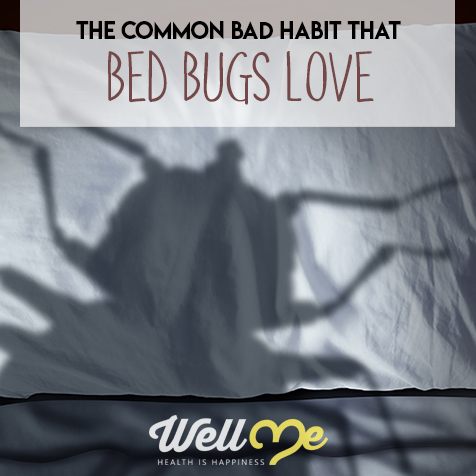Bed bugs are no fun. They live in your fabrics and their bites become inflamed and can be a real problem if they become infected. Getting bed bugs out is much harder than preventing them: if you’re safe now, the best thing to do is ensure that you stay bug-free.
Protecting yourself and your home from bedbugs is as simple as taking these precautions. Today, we’re going to share the habits that bedbugs love, and how you can change these habits to protect yourself from these awful critters.
How to Prevent Bed Bugs
Needless to say, having a case of bed bugs isn’t pleasant. If you’re wondering how to get rid of bed bugs, keep reading to learn a number of handy tips. Follow them, and you won’t have to deal with this stressful problem
Clean Your Home
The first thing to concern yourself with when looking to reduce your chances of a bed bug infestation is the general cleanliness and tidiness of your abode. If you live in a dirty, untidy home you’re unlikely to even notice bed bugs unless you’re covered in bites. Fostering a generally-clean environment is the single most effective way to keep yourself safe.
Cleanliness is especially important if you keep animals in the house – bed bugs can enter your life through your pets and if you aren’t on top of cleaning up animal fur, your chances of infestation will increase even further. Giving yourself the best chance of staying bedbug free is all about preparing the home and ensuring that there are as few untidy areas and as little dirt, dust, and hair around the house as possible.
Be sure to de-clutter your house and reduce the amount of hiding space for bedbugs: dark, dirty, cluttered homes make a magnet for these little critters and it is difficult to clean a home that is covered with unnecessary possessions. De-cluttering is great for organization and mental health, but also contributes to protecting you from the onset of bedbugs and other lice
Mattress Stagnation – Flip it, Vacuum it
Your mattress is where bedbugs are going to live, so it makes sense to start with proper maintenance and care for your bed. Mattresses can stagnate if they are not moved often, making a great, peaceful home for bedbugs. If you’re looking to avoid infestation, there are a number of things you can do to improve the environment of your mattress, keep it clean, and keep bedbugs at bay.
Flip It
Flipping your mattress is one of those rules in life that you’ve probably heard, but don’t stick to. “Flip your mattress at least every few months” is the same as “don’t run in the hallways” or “test your smoke alarm every week”: you definitely know you should, but nobody really does. However, you need to take this seriously if you’re going to avoid a bedbug infestation.
Flipping your mattress only takes a few seconds and can seriously improve your chances of staying free from infestation. We recommend making this a part of your routine whenever you change your bedsheets – it will be easy to remember and do, rather than a once-a-year thing!
Vacuum It
If you’re really concerned by the cleanliness and presentation of your mattress, like the rest of your house, you should treat it appropriately by vacuuming it. This is a great way to reduce the build-up of dirt, dust, and hair on your mattress and decrease the odds of getting bedbugs. You can do this once a week or as often as you vacuum the house, and it will drastically reduce your odds of infestation, as well as generally keeping your bed clean and tidy.
Replacing Your Mattress Completely
No matter how much care you take of your mattress, there will come a time when you need to replace it. Guidelines say that it will be every 2 to 5 years, dependent on how well you care for it and the kind of cleaning that you perform. If you’re reading this and haven’t changed your mattress since 1999, you’re not alone: this is another guideline that people often ignore.
Replacing your mattress is the best choice when you’ve had it for a long time and it has developed years of grime, dirt, and sweat. These are irresistible to bed bugs, so it is important to change your whole mattress periodically to ensure that you are not leaving residual dirt to attract bedbugs. If you are diligent with cleaning, you may be able to get 5 great years out of a mattress, but any longer than this begins to invite infestation.
Use A Mattress Cover
Mattress toppers and covers are a great investment. Not only do these provide a variety of textures to the top of your mattress (excellent if you’re renting and don’t get to choose your mattress), but they can reduce the ability of bedbugs to get into the mattress itself.
Protective covers and toppers are also great for keeping the mattress clean and improving longevity. By placing a cover between the mattress and your body, you reduce the amount of dirt and sweat that will soak into the mattress, and thus your odds of getting bedbugs. Mattress covers are also easy to wash, making them a great choice for long-term cleanliness – though you should still replace your mattress cover yearly.
Talc
Talcum powder is an underrated substance – not only is it a great way to reduce sweat, improve skin health, combat acne, and remain cool during rough summer months, but it can also improve the condition of your mattress. Bedbugs, like spiders and other bugs, live in dark, damp places with dead skin and sweat – talc is a great way of drying out your mattress and reducing the concentration of fresh sweat on the upper layers.
Talc-ing your mattress before you flip it is a great way to ensure that it remains fresh and clean during the week and reduces your chances of bedbug infestation. Talc yourself before bed to reduce sweat and the mattress when you change sheets to maximize your protection and keep your skin healthy.
Essential Oils
Essential oils like tea tree oil have been used for centuries to combat the infestation of critters like bedbugs and lice. These essential oils are great for the health of the skin and hair, but applying a small amount of tea tree oil to your mattress is a great preventative measure for ensuring that bedbugs don’t nest there.
Tea tree oil is incredibly potent, and a few drops will provide a significant protection from bedbugs and has a pleasant aroma. This simply solution is only useful if you are maintaining the cleanliness of the mattress – you won’t solve all your problems with tea tree if your home and bed are dirty.
Cover Door Spaces
While bedbugs are small, they need to get around somehow – a home that is cluttered makes this easier, but so does a home with no separation between rooms. Open-plan apartments may look great, but a lack of clear separation between rooms makes it easier for bedbugs to move around and to find out where you sleep.
Simply covering the space between the door and the floor can stop bed bugs dead in their tracks and ensure that your bedroom is kept separate from other areas of the house. While you should still be concerned to eradicate bedbugs completely through a proper cleaning and tidying routine (these are different things!), this simple method can drastically reduce the spread of the infestation and allow you to focus on single rooms at a time.

Summary: What Should You Do Now?
Bed bugs are tenacious creatures, and the way that you handle them needs to reflect this. When exterminating bedbugs and keeping your home clear, you should be diligent and ensure that you have taken all of the steps discussed above. Your home is a huge part of your life and the infestation of this safe space with bugs that bite you while you sleep is far from pleasant.
Fortunately, these bad habits can be eradicated easily with a little bit of effort and forward-planning. By implementing a serious cleaning routine for your home and bed, you can ensure that your home is a place to be proud of and sleep easy knowing that you’re safe and clean.
Action Steps: Tips for Protecting Your Home
- Clean your home: declutter and vacuum extensively.
- Cover door spaces to ensure that you can isolate a single room at a time.
- Implement a bed-changing and cleaning process that involves vacuuming, regular flipping of the mattress, talc-ing the bed and periodically replacing your mattress.
- Apply essential oils like tea tree to your bed to repel potential infestations.








